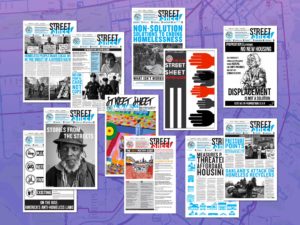In the age of such movements as “MeToo” and “Times Up,” we have seen a shift in the national discourse around sexual violence. However, even with the forward progress of these movements there is still one population that has been largely ignored and distanced from the mainstream narrative. Homeless individuals, particularly homeless women, are one of the most vulnerable populations when it comes to sexual harm, yet their stories are largely ignored. It is important that as a society we start to center these stories and take a look at the prevalence of violence experienced by individuals who are homeless. While I focus on homeless women in this article, specifically sexual violence against those who identify as women, it is important to note that men living on the street are also at high risk of violence. It has been estimated that 14% to 21% of individuals who are homeless have experienced violence personally, and one-third of the homeless population has witnessed an attack on another homeless person. This is in comparison to the approximately 2% of the general population who have reported experiencing a violent crime.[1]
With that in mind, homeless women are even more vulnerable to violence than their male counterparts. We lack the exact statistics of the prevalence of sexual violence among homeless women; however, in one study of homeless shelter residents in New York, it was found that homeless women were 106 times more likely to experience sexual assault than poor women who were housed.[2] In San Francisco, there is a need for additional research to get an accurate look on the exact percentage of homeless women who experience sexual harm; however, most service providers can agree that the number is high. It is also important to note that while rates of sexual violence are high for homeless women across the board, homeless women of color, transgender women, queer women, immigrant women, and disabled women are at even higher risk of sexual harm. San Francisco SafeHouse has been serving homeless women for over twenty years, and in that time we have found that in addition to sexual exploitation the women we serve have experienced high rates of sexual assault, sexual harassment, intimate partner violence, stalking, and hate crimes. These women raise their voices on a daily basis, yet their stories are ignored or discarded. So while it is important that women across the country are speaking out against sexual assault and sexual harassment, it is imperative that we start to listen when homeless women say #MeToo.
[1] Meinbresse, M., Brinkley-Rubinstein, L., Grassette, A., Benson, J., Hall, C., Hamilton, R., . . . Jenkins, D. (2014). Exploring the Experiences of Violence Among Individuals Who Are Homeless Using a Consumer-Led Approach. Violence and Victims, 29(1), 122-36
[2] Jasinski, Jana L., et al. Hard Lives, Mean Streets : Violence in the Lives of Homeless Women, Northeastern University Press, 2010. ProQuest Ebook Central, https://ebookcentral.proquest.com/lib/sfsu/detail.action?docID=1084910.

